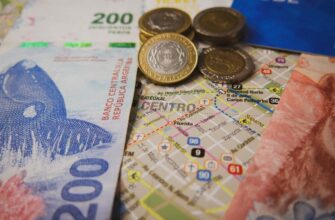What Are Ethereum Airdrops and Why Do They Matter?
Ethereum airdrops are free distributions of cryptocurrency tokens or ETH directly to users’ wallets. Projects use them to bootstrap communities, reward early adopters, or decentralize governance. Unlike ICOs, airdrops require zero investment—just proactive participation. With Ethereum’s DeFi and NFT ecosystems booming, airdrops have become lucrative opportunities. Some recipients earned thousands in 2023 from protocols like Arbitrum and Uniswap!
How Ethereum Airdrops Actually Work
Projects execute airdrops through three key phases:
- Announcement: Teams reveal airdrop plans via social media, blogs, or crypto forums.
- Snapshot: A “snapshot” of the blockchain records eligible wallets at a specific block height.
- Distribution: Tokens are automatically sent to qualifying addresses, often requiring a simple claim action.
Eligibility usually depends on past interactions—like using a DEX, holding NFTs, or voting in DAOs.
Finding Legitimate Airdrops: Trusted Sources
Avoid scams by using these verified channels:
- Official Project Channels: Follow Ethereum projects on Twitter, Discord, and GitHub.
- Airdrop Aggregators: Sites like Airdrops.io and CoinMarketCap Airdrops curate vetted opportunities.
- Crypto Communities: Subreddits (e.g., r/ethereum) and Telegram groups share real-time alerts.
- Blockchain Explorers: Check Etherscan for unexpected token deposits (common with surprise airdrops).
Step-by-Step Guide to Claiming Your Free Ethereum Airdrops
- Set Up a Secure Wallet: Use non-custodial wallets like MetaMask or Trust Wallet. Never share your seed phrase!
- Get Active in Crypto Ecosystems: Interact with DeFi apps (e.g., Uniswap), mint testnet NFTs, or join DAO governance.
- Monitor Airdrop Announcements: Track projects via Twitter lists or airdrop calendars.
- Verify Eligibility: Use project dashboards (e.g., LayerZero’s eligibility checker) to confirm your wallet qualifies.
- Claim Tokens: Follow official links to claim pages. Gas fees may apply—time transactions during low network congestion.
- Secure Your Assets: Transfer tokens to a hardware wallet post-claim.
Pro Tips to Maximize Airdrop Rewards
- Use multiple wallets for different activities (but avoid sybil attacks—projects detect this!).
- Participate in testnets: Projects like zkSync often reward testers.
- Hold governance tokens: Staking or voting boosts eligibility for future drops.
- Track your activity: Tools like DeBank show your on-chain “footprint” for potential airdrops.
Airdrop Risks and Safety Checklist
While free, airdrops carry risks:
- Scams: Fake airdrops steal wallets. Rule: Never pay to claim or connect your wallet to unverified sites.
- Tax Implications: Airdrops are taxable income in many countries. Track received values.
- Wallet Security: Revoke unused token approvals via Etherscan to prevent drainer attacks.
Red Flags: “Double your ETH” offers, urgent deadlines, or requests for private keys.
Frequently Asked Questions (FAQ)
Q: Are Ethereum airdrops really free?
A: Yes! Legitimate airdrops never require payment. You only pay gas fees to claim or move tokens.
Q: How much can I earn from airdrops?
A: Rewards vary. Early Uniswap users got $10k+ in UNI. Recent LayerZero airdrops averaged $200-$2,000 per wallet.
Q: Do I need KYC for airdrops?
A: Rarely. Most are permissionless, but some centralized exchanges require KYC for their airdrops.
Q: Can I get airdrops on Coinbase or Binance?
A: Only if the exchange hosts it. Most airdrops require a non-custodial wallet (e.g., MetaMask).
Q: How often do big airdrops happen?
A> Major ones occur 5-10 times yearly. Stay consistent—projects reward sustained engagement.
Final Tip: Treat airdrop hunting as a marathon. Diversify your on-chain activity, prioritize security, and patience pays off!








